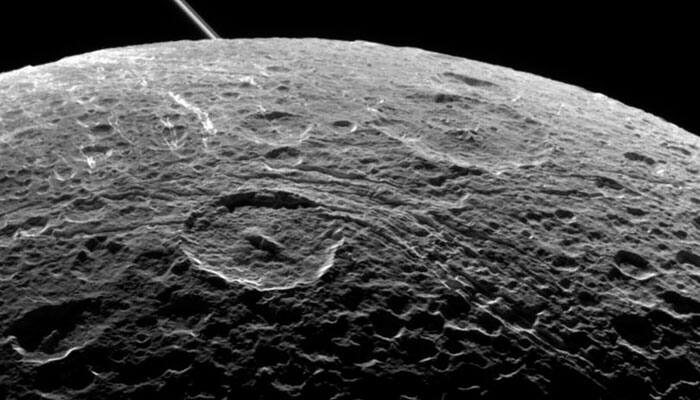Pasadena, Calif: NASA’s Cassini spacecraft zipped past Saturn’s moon Dione for its last time on Monday, August 17, in search of direct evidence that the moon is geologically alive and active.
According to US space agency NASA, Cassini’s closest approach, coming within 295 miles of the moon’s surface, came at 2:33 p.m. EDT earlier Monday afternoon.
Our @CassiniSaturn spacecraft zipped past Saturn's moon Dione for the final time today. More: http://t.co/O9pAQlfy30 https://t.co/h4quTyaSOr
— NASA (@NASA) August 18, 2015
Scientists expect fresh images from Cassini's final close flyby to start arriving on Earth within a few days.
During its mission to Saturn, Cassini has flown closely by the icy moon Dione four times.
Cassini’s cameras and spectrometers will offer NASA scientists a high-resolution look at Dione’s north pole from this flyby. Scientists also expect the data to give them a better knowledge of the moon’s internal structure.
The spacecraft has performed this sort of gravity science investigation with only a handful of Saturn's 62 known moons.
Cassini has been studying the Saturn system since 2004. After a series of close moon flybys in late 2015, the spacecraft will depart Saturn's equatorial plane -- where moon flybys occur most frequently -- to begin a year-long setup of the mission's daring final year.
NASA says for its grand finale, Cassini will repeatedly dive through the space between Saturn and its rings.
Cassini’s closest-ever flyby of Dione was in December 2011, at a distance of 60 miles (100 kilometers).
Saturn is the second largest planet in our Solar System, after Jupiter. It is a gas giant with an average radius about nine times that of Earth. But, this giant planet has a very low density. Composed mostly of hydrogen and helium, it is only 95 times more massive than Earth.
Saturn, which can be seen with the naked eye, is the fifth brightest object in the solar system and is also easily studied through binoculars or a small telescope.
Saturn's moon Dione was discovered by Italian astronomer Giovanni Domenico Cassini in 1684, and was first imaged up close by the Voyager 1 spacecraft in 1980.
The Cassini-Huygens mission is a collaboration between NASA, ESA (European Space Agency) and the Italian Space Agency.
















